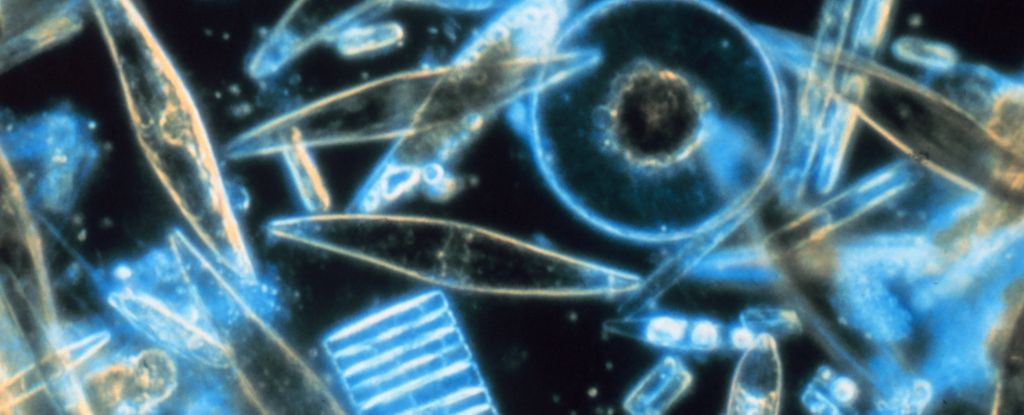
A striking turquoise patch observed in the Southern Ocean has finally been explained by a team of oceanographers. This phenomenon, which has puzzled scientists since its first sighting in satellite images in the early 2000s, appears to stem from a unique combination of microorganisms that challenge existing assumptions about carbon absorption in these frigid waters.
Situated north of the vibrant patch is an area known as the Great Calcite Belt, identified around two decades ago. This region is teeming with billions of coccolithophores, microorganisms that construct calcite scales called coccoliths. These organisms play a vital role in the global carbon cycle, sequestering an estimated 30 million tonnes of carbon annually. The coccoliths increase ocean reflectance, a factor that satellite oceanographers utilize to estimate calcite concentrations in the ocean.
Despite the overwhelming presence of coccolithophores in the Great Calcite Belt, the turquoise patch to the south raised questions due to the cold water temperatures, typically inhospitable to these microorganisms. Rough seas, heavy cloud cover, and icebergs often obscure this region, making in-depth analysis challenging.
Determined to uncover the truth, oceanographer Barney Balch and his team embarked on an expedition aboard the research vessel Roger Revelle. Their journey took them from Hawaii toward the South Pole, traversing the Great Calcite Belt during its summer bloom. As Balch noted, “Satellites only see the top several meters of the ocean, but we were able to drill down with multiple measurements at multiple depths. There’s nothing like measuring something multiple ways to tell a more complete story.”
To investigate, the team conducted a series of measurements, including ocean color, calcification rates, photosynthesis rates, and concentrations of inorganic carbon and silica. These minerals are indicative of both coccolithophores and their competitors, diatoms, which create their own shells from silica glass. Both groups of plankton occupy similar ecological niches, competing for resources while contributing to organic carbon sequestration in the deep ocean.
Historically, the Great Calcite Belt has been viewed as the domain of coccolithophores, while waters south of its polar front were thought to be reserved for diatoms. Previous observations of high-reflectance waters further south had raised skepticism, as coccolithophores are not typically found in such cold environments. The authors of the study noted that alternative explanations for the brightness, including loose ice, glacial flour, or increased bubbles, had been proposed.
The expedition yielded groundbreaking findings. The water samples collected provided the first evidence of calcification occurring in these southern waters. The researchers observed moderate concentrations of coccolithophores and detached coccoliths extending as far south as 60°S. Despite this discovery, the authors acknowledged that a few coccoliths alone could not account for the brightness seen in satellite imagery.
The data suggested that diatoms, dense in these waters, were responsible for the observed reflectance due to their glassy structures, which scatter light similarly to coccolithophores. “Our results suggest that these highly reflective polar waters result from scattering by diatom frustules, not coccolithophores, and have been misidentified as particulate inorganic carbon in satellite measurements,” the authors stated.
Balch and his colleagues highlighted the need to reassess the methods used by satellites to estimate particulate organic carbon in light of their findings. “We’re expanding our view of where coccolithophores live and finally beginning to understand the patterns we see in satellite images of this part of the ocean we rarely get to go to,” Balch explained.
This research, published in Global Biogeochemical Cycles, marks a significant advancement in our understanding of marine ecosystems and their role in the global carbon cycle. The implications of these findings extend beyond scientific curiosity, potentially influencing climate modeling and future environmental policies.







